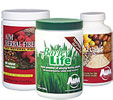


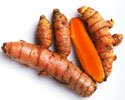
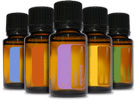
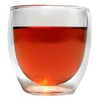
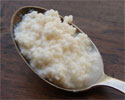
| Natural Skin Care | ||||
|---|---|---|---|---|
 |
 |
 |
 |
|
 |
 |
 |
||
|
Boost the Immune SystemBuild up the immune system Eat the right foods | Take essential supplements | Avoid yeast, mold and fungi Eat the right foods Eating the right foods is the most important aspect of getting Candida under control and building up the immune system. Most Candida Control Diets are high in protein, mainly from animal meats, high in good fats and oils, low in carbohydrates and contain no sugars, grains or processed foods. If possible, foods should be organic, fresh and natural, unprocessed and free from unwanted additives, pesticides, heavy metals, irradiation and mycotoxins. A high protein diet - Best source of Proteins are meat, eggs, cheese and other foods from animal sources. Vegetables, fruits and grains contain incomplete proteins and also do not contain the fat soluble vitamins required by the body for utilizing protein and other nutrients. (Vegetarians and Vegans, please see the information at the bottom of this page for plant source of protein). Good Fats & Oils provide a great source of energy and increase the body's ability to absorb nutrients from the food that are eaten. Fat-soluble vitamins are essential to health and a healthy immune system. Avoid all bad fats and oils (trans-fats). The most common bad fats are derived from plants such as canola (rape seed), soy, safflower, sunflower, corn, and flaxseed. Minimise the consumption of toxic hydrogenated fats and polyunsaturated oils. These fats and oils depress the immune system. Eat plenty of saturated fat - Natural fats and oils are health-promoting. Healthy saturated fats draw nutrients out of foods and slows digestion which is important for natural enzymes and the assimilation process can take place. Healthy saturated fats include coconut oils, butter, butterfat, tallow, lard, and fish and palm oils. Avoid Carbohydrates - Low carbohydrate consumption is an important aspect of any Candida Control Diet since high carbohydrate foods feed the Candida. Carbohydrate foods are any foods that are not protein or fat, including all vegetables, grains and fruits. Since grains, except buckwheat, millet and Quinoa, and most fruit, except lemons, are eliminated on the Candida Control Diet this leaves a wide variety of vegetables that are healthy to consume. Vegetables with the lowest carbohydrate index are green beans, broccoli, cauliflower, cabbage, turnips, spinach, asparagus, celery, peppers, kale, mustard greens, and Chinese cabbage. Some vegetables also inhibit the growth of Candida such as raw garlic, onions, horseradish, cabbage, broccoli, turnip, and kale. Celtic Sea Salt activates the first enzyme in the mouth, salivary amylase, and sodium chloride (salt) stimulates hydrochloric acid production, a secretion needed for digestion. It is also important in keeping the proper balance of salt to potassium in the body. Adding Celtic Sea Salt to your diet is the best way to obtain trace minerals. Take essential supplements Build up the immune system - A nutrient rich diet needs to be supplemented with certain essential vitamins, minerals and other nutrients. All products should contain no yeast, soy, wheat, dairy, sugar, preservatives or additives. The most important supplements to take are: Calcium/Magnesium Citrate, Chlorella or Liquid Chlorophyll, Cod Liver Oil in the winter, Fish Oil in the summer, Vitamin B Complex, Vitamin C, Vitamin E, minerals. Avoid yeast, mold and fungi Avoid yeast, mold and fungi in foods and the environment. Candida overgrowth can increase the chances of an immune reaction to all types and forms of fungi. The result is an allergic response to yeast, mold and fungi, including mycotoxins. Many of our foods contain mycotoxins that are chemicals made by fungi. Mycotoxins are found in grains and other processed foods that have been contaminated with fungi and mold, including processed meats. The most commonly contaminated crops are peanuts, corn, and wheat. Often, other foods such as barley, apples, sorghum and rye can also be contaminated. Antibiotics and alcohol are also mycotoxins.
Go to Candida Diet Part 3 Kill Off Candida Overgrowth with Anti-Fungals The products along the side are to assist in a Candida Control program. Below are some books to help with Candida Diets and Candida Control Programs
|
|
|||||||||||||||||||||||
|---|---|---|---|---|---|---|---|---|---|---|---|---|---|---|---|---|---|---|---|---|---|---|---|---|---|
| < back | |||||||||||||||||||||||||